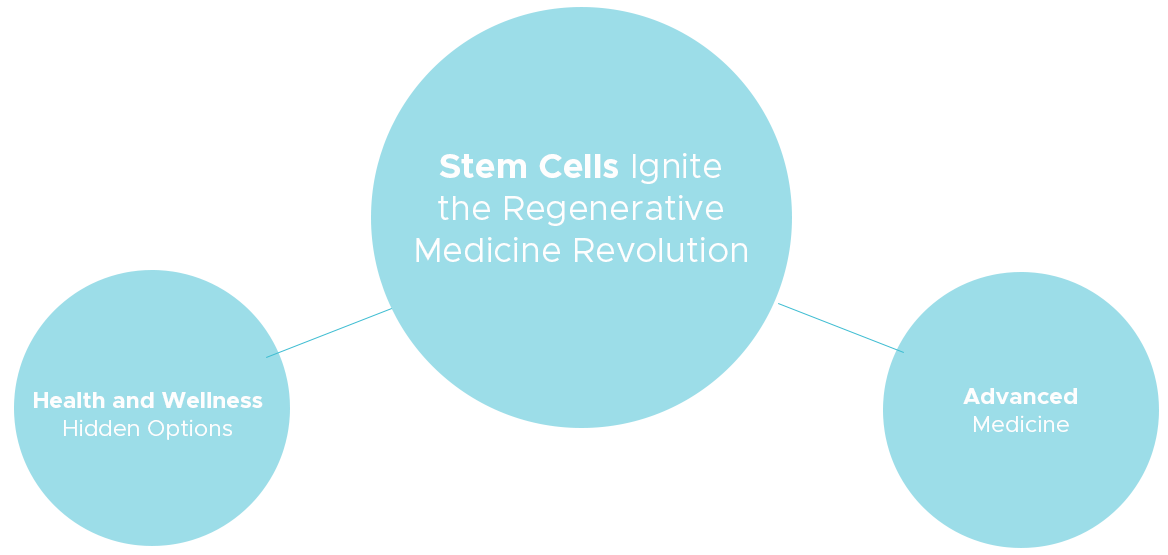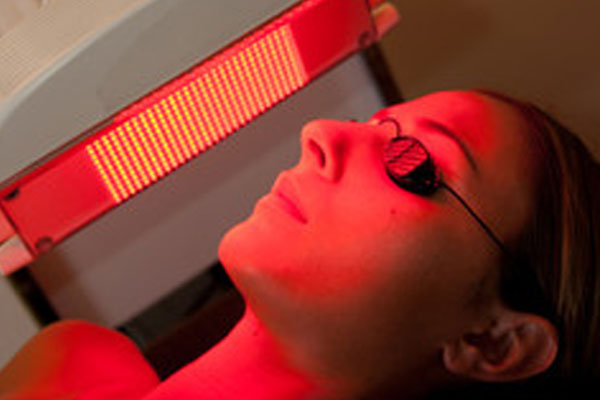Connecting Patients to Cutting Edge

Stem Cells Ignite
the Regenerative
Medicine Revolution
The human body is capable of extraordinary healing—just consider that a single cell can grow into an entire person. This healing potential lies in the body’s ability to activate complex repair systems when it receives the right biological signals.
Early stem cell therapies focused on using whole, living cells. However, these cells contain DNA from donors, which introduced potential risks and raised regulatory concerns. As regenerative science evolved, attention shifted from the stem cells themselves to the tiny messengers they release—called extracellular vesicles or exosomes.
Exosomes carry the signaling molecules responsible for triggering the body’s natural healing responses—without introducing donor DNA. This advancement opens new doors in cellular medicine. However, because these therapies are based on human cell or tissue products, the FDA currently permits their use only within clinical trials in the United States. As a result, many patients seeking access to the most advanced regenerative options still travel to international clinics in places like Costa Rica or Panama.

Connecting Patients with Cutting Edge Medical Advances in an Ever-Evolving Healthcare Landscape

We are programmed from conception with every message needed for our systems to regenerate from injury, to combat disease and to maintain youthfulness. As long as these messages remain turned on, regenerative processes allow healing to achieve the peak performance we experience in youth.
As we age, some messages turn off. This decline is universal for all people and occur to varying degrees as a result of events, environment, stress, activity, nutrition, genes and chronology. Even the most fit adult cannot fully heal once DNA turns off certain regenerative messages.
For individuals immersed in advanced-stress environments, decline can accelerate further presenting need for reintroduction of regenerative messaging sooner. Proactive regeneration through the administration of Cell Factors opens the opportunity for less downtime, faster cognition and sustained energy.
Turning these foundational messages back on holds the key to regenerating from injury, reversing disease and sustaining peak performance.

Cell Factors (CF) is an advanced regenerative therapeutic derived from bioactive molecules found in placental tissues, specifically engineered to stimulate and enhance the body’s natural healing and regeneration processes. Produced by cultivating placental tissue under controlled laboratory conditions, CF contains a potent blend of proteins, cytokines, and growth factors that optimize cellular communication, reduce inflammation, and significantly accelerate tissue repair.
CF has shown remarkable therapeutic potential across diverse clinical applications, including orthopedic and musculoskeletal injuries, neurological conditions, autoimmune disorders, and chronic inflammation. Due to its ability to comprehensively improve cellular health and resilience, CF is considered a promising advancement beyond traditional regenerative approaches such as stem cells, exosomes or platelet-rich plasma (PRP).
Although not yet FDA-approved for general therapeutic use, CF continues to gain recognition in regenerative medicine for its safety, targeted effectiveness, and transformative clinical outcomes, making it a valuable therapeutic candidate for improving patient quality of life and addressing complex medical conditions.
Placental stem cells produce every regenerative message in the body. Placental regenerative messages are RNA – not the cells or DNA providing the road map for stem cells to facilitate regeneration in the body. MicroRNA sourced from these young cells can turn the messages back on to address injury and disease.
Cell Factors (CF) utilizes bioactive molecules derived from placental tissues to stimulate the body’s natural regenerative capabilities. Renowned for its ability to significantly enhance tissue repair, reduce inflammation, and optimize overall cellular health, CF is gaining recognition for its extensive therapeutic potential in regenerative medicine and wellness practices. Although currently categorized under protein-based therapies, ongoing research continues to validate its effectiveness and safety profile.

CF contains a potent array of bioactive molecules that enhance cellular repair processes by creating an optimal environment for tissue regeneration. Its unique formulation significantly improves transcriptional and translational cellular activities, leading to rapid and effective tissue healing and restoration.

CF demonstrates strong anti-inflammatory properties, effectively reducing inflammation at the cellular and systemic levels. Its ability to modulate immune responses helps minimize tissue damage, alleviate chronic inflammation, and support long-term regenerative outcomes.

By enhancing cellular communication and promoting cellular integrity, CF supports overall cellular resilience and metabolic balance. These actions contribute to sustained health improvements, effective tissue regeneration, and optimized biological functions across various tissues.
CF is legally available in the US for clinical and research purposes through specialized suppliers but is not FDA-approved for general therapeutic applications.
Yes, CF has been administered in 10,000 cases with outstanding results, demonstrating significant regenerative effects across various medical conditions.
Side effects reported in clinical applications are minimal and generally mild, including transient reactions at injection sites. Long-term safety evaluations are ongoing.
CF is typically administered via localized, systemic injections or IV, tailored according to the specific therapeutic objectives and clinical research protocols.
No. Unlike Stem Cells, CF has no foreign DNA or cellular properties.
CF therapy is frequently explored in combination with other regenerative treatments. Many patients report combining with certain peptides and or redlight therapy has a synergistic effect.
CF significantly enhances tissue repair and cellular regeneration during active treatment periods. Long-term sustained benefits typically require ongoing or periodic treatments, supported by comprehensive wellness strategies.
Frequently Asked Questions
1. What are peptides?
Peptides are short chains of amino acids – the basic building blocks of proteins. In your body, they act as messengers, helping regulate important functions like energy, repair, mood, sleep, and metabolism.
2. Are there side effects?
When guided by a medical professional, peptides are safe for most people. Occasionally, some may notice mild effects such as fatigue, nausea, or headaches if dosage is not properly tailored.
3. When will I notice results?
Results vary depending on your body and your goals:
– Healing / Recovery: days to weeks
– Weight / Metabolism: days to weeks
– Fitness / Hormones: weeks to months
– Cognition / Mood: hours to days
– Skin / Aesthetics: days to weeks
4. Do I have to take peptides forever?
No. Peptides are usually taken in cycles. Some people use them short-term for recovery or specific goals; others may continue longer for ongoing wellness and performance.
5. Which peptides are used in the programs?
Different programs include blends designed for outcomes such as:
– Weight management
– Muscle building and recovery
– Longevity and metabolism
– Neurological and sleep support
– Sexual health and vitality
– Healing and inflammation support
1. What are Cell Factors?
Cell Factors are natural molecules your body already makes to help cells “talk” to each other. They send signals that guide repair, healing, and balance in the body.
2. How do they work?
They act like the body’s communication system, encouraging your own cells to:
– Support healing and tissue repair
– Calm excess inflammation
– Promote healthy blood flow and new tissue growth
– Strengthen resilience against stress
3. How are they different from stem cells or exosomes?
Stem cells are live cells. Exosomes are tiny delivery packages. Cell Factors are simply the messages themselves – the instructions your body uses to heal and restore balance.
4. Are they safe?
Yes. Because Cell Factors are not live cells, they avoid many of the risks tied to cell therapies. They simply work with your body’s own natural systems.
5. Where do they come from?
Cell Factors are naturally produced by all the cells in your body. Modern science can collect and concentrate them so they can be reintroduced at stronger levels for better effect.
6. Are they regulated?
Yes. The FDA has specific guidelines for how products like Cell Factors are collected and used in wellness settings.
7. Are there side effects?
None are known. They are naturally occurring molecules that your body already produces.
8. What results should I expect?
Most people report:
– Faster recovery after treatments
– Reduced downtime and discomfort
– More energy and vitality
– Improvements in inflammation, pain, and skin quality
9. Do I need them forever?
Not necessarily. Many people use them monthly as part of a wellness plan, while others add them only
during certain treatments. It depends on your goals and how you feel.
10. How quickly will I notice results?
Some feel the effect within hours, while others notice improvements over days to weeks.
Frequently Asked Questions
Exosomes contain a mix of proteins, RNAs, lipids, and sometimes unwanted material (like tumor-promoting or inflammatory signals). Their cargo is not always predictable.
Cell factors are purified, known molecules (like VEGF, EGF, TGF-β, IGF-1, interleukins). This makes their function more direct, targeted, and easier to control.
Advantage: Cell factor therapy avoids the ‘black box’ variability of exosome cargo.
Exosomes can sometimes transfer genetic material (like microRNA or DNA fragments), which poses theoretical risks — altering gene expression in unintended ways, possibly promoting oncogenesis (cancer risk).
Cell factors do not carry DNA or RNA. They are signal-only molecules with a transient effect and far lower oncogenic risk.
Advantage: Cell factors = safer, cleaner, non-genetic signaling.
Exosomes rely on delivery of their cargo into cells — which is variable and dependent on uptake efficiency.
Cell factors act immediately on receptor binding. A single molecule of a growth factor can trigger powerful cascades (e.g., angiogenesis, stem cell recruitment, anti-inflammatory effects).
Advantage: Cell factors can be orders of magnitude more potent (e.g., 100–1000× compared to PRP; often stronger and more reliable than exosomes).
Exosomes require complex isolation (ultracentrifugation, chromatography, filtration), GMP hurdles, and face strict FDA scrutiny.
Cell factors can be produced more simply, lyophilized (freeze-dried for stability), standardized, and scaled with fewer regulatory gray areas.
Advantage: Cell factors are easier to manufacture, store, and commercialize.
Exosomes work indirectly — modulating target cells by delivering genetic/epigenetic information.
Cell factors work directly — binding to receptors, activating healing cascades (tissue repair, reduced inflammation, collagen synthesis, angiogenesis).
Advantage: Cell factors = faster, more predictable results in aesthetics, wellness, and regenerative medicine.
Exosomes = complex, genetic cargo messengers (powerful but less predictable, higher risk, harder to regulate).
Cell factors = purified, potent signaling molecules (safer, more direct, standardized, and commercially scalable).
That’s why many leading-edge clinics are pivoting away from exosome-only treatments and toward cell factor–integrated protocols.

Congratulations on your choice to explore regenerative and elective medicine! Simply share some details about yourself and your goals, and we’ll arrange an appointment with the right specialist. If needed, we can also connect you with multiple options.
Personal Stories of Healing

EdgeMedx is currently accepting qualified providers into our International CF Provider Network. With acceptance into the network comes a wealth of resources you’ll have at your fingertips to successfully treat your patients. The turnkey package includes but is not limited to:
There is currently no cost for this package. If you are interested, please complete the brief form below and one of our onboarding specialists will assist to expedite the process.

Location:
1415 Park Ave West
Denver, CO 80205
Phone: 720-770-7070
© 2025 | EdgeMedX
DISCLAIMER: THIS WEBSITE DOES NOT PROVIDE MEDICAL ADVICE. We do not claim to treat, diagnose, or prevent any disease or condition. Information contained on this website, including text, graphics, pdf files, images, videos, and other content, is for informational purposes only. The information on this website is not intended to substitute for professional medical advice or diagnosis. You should always consult a physician or qualified health care professional if you need medical advice.

Modern regenerative medicine is no longer just about stem cells. Today’s therapies go beyond simple cell injections. Cutting-edge science activates the body’s own regenerative instructions—encoded in our DNA—to drive repair from within. These therapies mimic the natural developmental signals we once had in early life, offering safer, more effective outcomes than ever before. As one innovative therapy puts it: it “turns on the regenerative signals every human being already has encoded into their DNA.”

Advanced technologies like tissue engineering, immunomodulation, and physical stimulation tools are transforming what’s possible. Techniques such as low-intensity pulsed ultrasound (LIPUS) boost stem cell–based cartilage regeneration by reducing inflammation and enhancing cellular activity. Similarly, biomaterial scaffolds—often infused with growth factors or RGD peptides—mimic the body’s own extracellular matrix. They support new bone and tissue growth to treat orthopedic defects without invasive surgery .

Peptides—short chains of amino acids—offer precisely targeted benefits with excellent safety profiles. These include well-known options like collagen peptides for skin and joint health, BPC‑157 and TB‑500 for accelerated tendon and muscle repair, and GHK‑Cu for wound healing and collagen stimulation. Nutraceutical blends can be designed to enhance recovery, support immunity, and slow aging—working in perfect synergy with advanced therapies.

The frontier of regenerative medicine keeps expanding. Immunomodulation therapies are being used to recalibrate the immune system and treat autoimmune and degenerative diseases. Exosomes—tiny cell-derived vesicles—are gaining traction in skincare for their anti-inflammatory and regenerative effects. Red light therapy, growth factor serums, and peptide-enhanced nanomaterials are also being adopted to optimize tissue healing, enhance skin quality, and rejuvenate energy. Each of these cutting-edge tools reflects medicine’s shift toward precision, non-invasive restoration at the cellular level.

